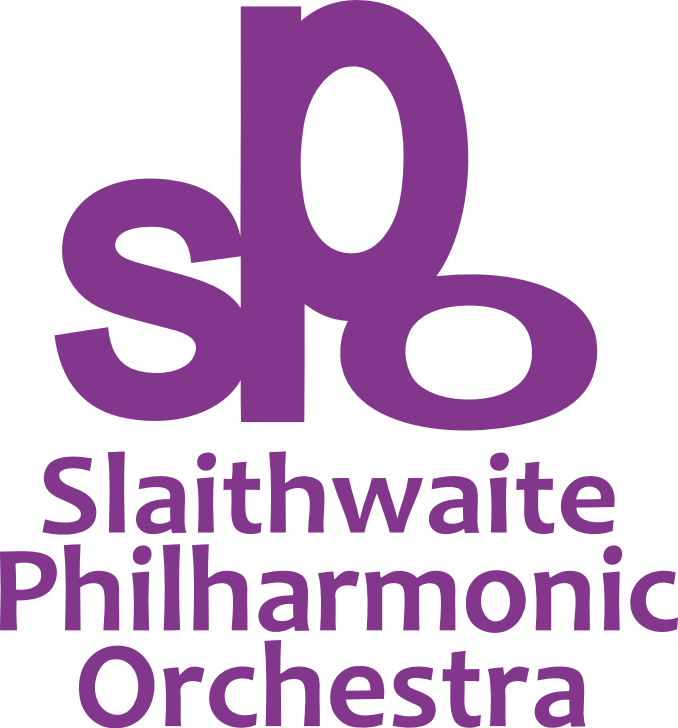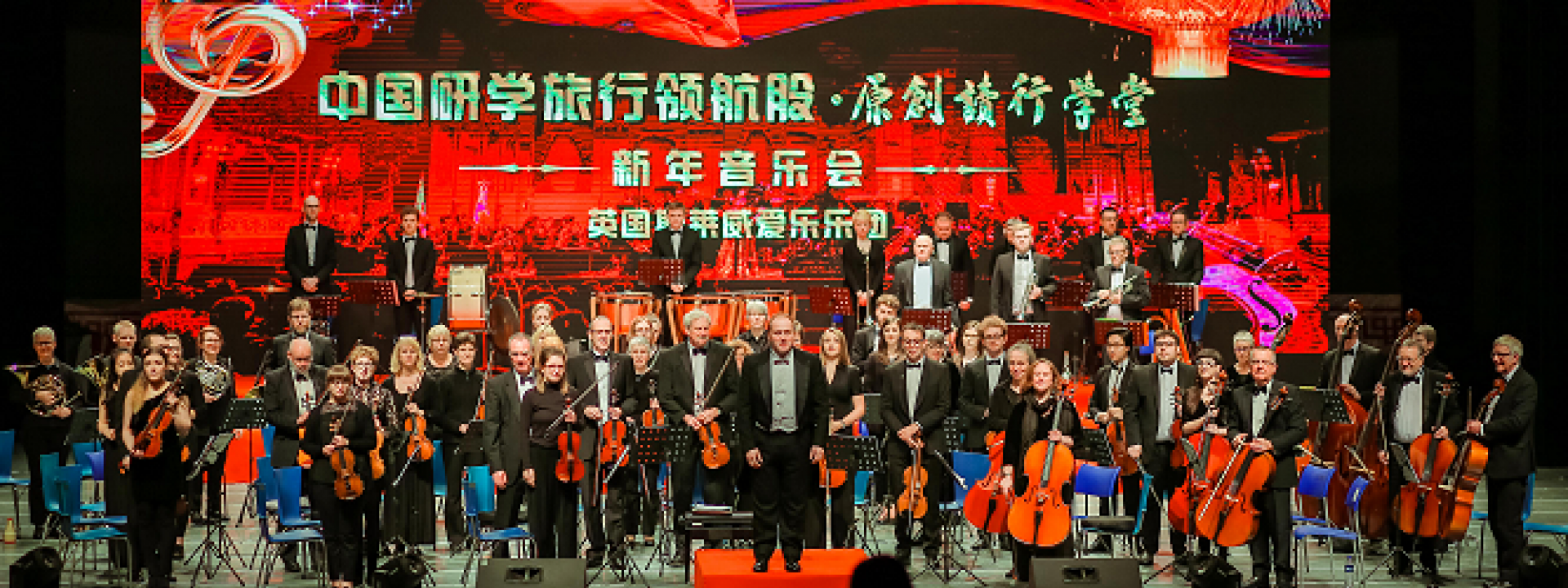Sunday 3 March 2024 - Programme Notes by Nareece Forrest
Bach - Brandenburg Concerto No 2
Beethoven - Piano Concerto No 3
Mendelssohn - Symphony No 3, Scottish
Johann Sebastian Bach - Brandenburg Concerto No 2
The Brandenburg Concertos got their name as they were presented by Johann Sebastian Bach (1685-1750) to Christian Ludwig, Margrave of Brandenburg-Schwedt, in 1721 (although they were very likely written earlier). We are performing the second of six today.
The concerto has three movements, and is scored for solo oboe, recorder, trumpet and violin, and “ripieno” (stuffing!) of violins, violas, cellos, double bass and harpsichord continuo – (in Baroque music a continuo is an accompanying part which aides the harmonic and melodic themes).
The first movement is marked Allegro (fast), and opens with a joyful “ritornello” (little theme) in F major - immediately presented by the solo violin. The oboe, flute and trumpet each take their turn weaving in and out of each other, as the accompanying strings add texture and the harpsichord continuo provides harmonic support. Even the ripieno are given the theme while the soloists pass semi-quavers back and forth, granting the music a perpetual motion feel. Bach gives all the players lots to do in this movement, so much so it is sometimes difficult to distinguish the solo lines from the ripieno.
In Baroque music it is very common to write the second movement in a minor key, and Bach chooses the relative minor key of F major – D minor. Bach originally wrote the trumpet part for a “clarino” - a high-pitched trumpet originating from the Middle Ages and Renaissance, which doesn't have valves and only plays in major keys, so it is omitted altogether here; as are the ripieno. This creates a much lighter, softer texture, and matches the gentle Minuet, Andante (moderately slow) marking.
Written in ¾ time, the solo cello moves in constantly rocking quavers, highlighting the exquisite harmony, while the oboe, recorder and violin tenderly float above, sharing the melancholic, eloquent melody. The harpsichord continuo keeps pace with the cello, bringing the harmonies to the fore and adding extra expression to some of the melodic notes. The movement finishes with a rhythmic slight of hand, and at the very last moment the violin has a “Tierce de Picardie” (Picardy Third) trill, so the minor becomes major, raising a smile for what is to come.
Originally the “clarino” player would have been a highly skilled musician, changing their mouth shape to achieve higher pitched notes. Most players in modern times use a “piccolo trumpet” when performing this work, which sounds an octave above a normal trumpet and has four valves instead of the usual three.
An example of this trumpet can be heard in “Penny Lane” by The Beatles. Sir Paul McCartney heard a recording of Brandenburg 2 while writing the song, and asked the piccolo trumpet player (David Mason) if he would record a solo for the song. Happily he obliged.
The piccolo trumpet can be built to play in different keys, but most are either in A or B flat. Despite the assistance of valves it is a technically demanding instrument, taking great skill and musicianship to balance the sound with the other soloists in this concerto.
Having had a reprieve in the 2nd movement, the trumpet is back in the spotlight for the opening of the finale with a bright fugal melody, which passes seamlessly to the oboe. Violin and recorder soon follow, all showcasing their finger dexterity, until the ripieno join in to make the most of the Allegro Assai (very lively) mood.
As the movement progresses, the recorder and violin draw you in with their intimate duet, and the oboe and trumpet give an equally matched reply. Bach's skill is evident here in lightening the instrumentation so the softer recorder can be heard, before letting the trumpet back in to soar above all the others. Both soloists and ripieno have interchanging, energetic semi-quaver passages as they round the corner to the final flourish, where the trumpet has the last, triumphant word.
Ludwig van Beethoven - Piano Concerto No 3
Ludwig van Beethoven (1770-1827) wrote his Piano Concerto No. 3 around 1800, and was the soloist at its premiere on the 5th of April, 1803. It was essential he performed the work as he had not entirely finished the piano part (!), and he improvised the cadenza that evening. His friend and fellow composer Ignaz von Seyfried turned the pages of the music that night. He later wrote: “I saw almost nothing but empty pages; at the most, on one page or another a few Egyptian hieroglyphs wholly unintelligible to me were scribbled down to serve as clues for him, for he played nearly all the solo part from memory since, as was so often the case, he had not had time to set it all down on paper”.
Soon after that initial performance Beethoven completed his sketched ideas, so the concerto was fully complete. It was first published in 1804; dedicated to Prince Louis Ferdinand of Prussia.
Beethoven constructs the concerto using the Classical/Romantic era standard three movement form, and starts in C minor. Marked Allegro con brio (fast and with brilliance), the strings are given the first theme; soon joined by the oboe and other woodwind. The piano announces its arrival with quickly ascending scales in octaves. With minimal orchestral accompaniment the piano shines through. As the music progresses the pianist is kept busy with trills, runs and arpeggiated semi-quavers. These all make a return in the cadenza, which at times is stormy, but gradually everything fades to pianissimo (very soft). Tranquil trills guide the orchestra back in, and with one final crescendo (a gradual increase in loudness) from soloist and orchestra combined, the movement emphatically ends with a sequence of C minor chords.
Completely unaccompanied, the lone piano starts the Largo (with a slow tempo and dignified style), and immediately establishes a tranquil, contemplative mood; albeit with a shocking-to-the-ear opening chord of E major. This key is unrelated to the C minor we have just repeatedly heard, and is a brilliant choice by Beethoven to make us sit up and listen. The languishing melody unfurls, intertwined with punctuated silences every bit as important as the notes played. As the orchestra gently enters, the flute and violins join forces to repeat the opening theme.
The music develops, and Beethoven shows he was truly ahead of his time – despite the piano being the main soloist, it now becomes an accompanist under bassoon and flute solos. This practice was not yet established in concertos from the Classical period; it only became more common in the Romantic era, and shows Beethoven's ingenuity and creativity.
All continues quietly; the piano lulling us with slow, arpeggiated notes played in octaves, alternating between the left and right hands. The final chord (marked fortissimo – very loud) jolts us out of our reverie, and prepares us for the fireworks in the Finale.
The lively 3rd movement is a Rondo – where a musical idea is repeated a number of times, often in different keys, with other musical themes interspersed between. Beethoven brings us back to the key of C minor, and the dialogue between piano and orchestra remains on equal footing for a time. Instead of introducing another new idea we hear a reiteration of the sunlit slow movement, basking in its beauty for a moment before heading towards a Presto (in a quick tempo) coda. With a change of key to C major and a new time signature of 6/8, now the piano pyrotechnics really pick up! The pianist's fingers seem to cover nearly every note of the keyboard as they race to the finish line, leaving the orchestra catching their breath with the final few exultant chords.
Felix Mendelssohn - Symphony No 3, Scottish
Felix Mendelssohn (1809-1847) composed his Third Symphony (known as “The Scottish”) between 1829 and 1842. During his first visit to Britain in 1829 he embarked on a walking tour of Scotland and was inspired by the ruins of Holyrood Chapel at Holyrood Palace in Edinburgh. Seeing the roofless structure at twilight, he wrote to his family: “Everything is ruined, decayed, and the clear heavens pour in. I think I have found there the beginning of my “Scottish” Symphony.” A few days later he visited the island of Staffa – the influence for the magical “Hebrides Overture”. Scotland provided a wealth of rich material for the 20 year old composer and helped cement the genius of Mendelssohn's writing.
Despite the initial inspiration, Mendelssohn struggled to complete the work and he put it aside for a decade. He eventually completed it in 1842. At one of its early performances in London the young Queen Victoria was present, to whom the symphony is dedicated.
Great composers are often named by their ability to show innovation and originality, and in this work Mendelssohn displays his by deploying a few unusual ideas. Firstly the four movements are played without any breaks - this was virtually unheard of at the time, and the opening introduction brings the unexpected pairing of the woodwind and violas together (without the violins!). They present a slow, subdued theme, conjuring the “ruined, decayed” chapel of Holyrood, and although some other instruments gradually join in, the sparse texture is held until well into the Allegro, when the full orchestral forces are finally unleashed. To provide a moment of calm, the cellos offer the “clear heavens” with a pretty counter-melody, which gives way just after the main theme returns. Towards the end of the movement, Mendelssohn surprises us again - this time with a ferocious storm sequence, which easily rivals The Hebrides in its depiction of sensing the Atlantic swells in a wave-tossed boat on the way to Staffa and Iona. Thankfully the storm subsides, as we hear an echo of the opening introduction to bring an end to the movement.
As we carry on into the Vivace non Troppo (lively, not too quick), we are treated to a Scherzo (a playful piece), where the clarinet launches a toe-tapping tune, reminiscent of Scottish folk music and highlanders making merry. It fizzes round the orchestra, then the strings introduce a second idea which is light, bouncy and in rhythmical unison. After the whole orchestra joins the dancing, they gently ebb away with arpeggios running up and down in the key of F major, and three quiet pizzicato (plucked) notes signal the revellers have finally run out of steam.
The third movement is a beautiful Adagio (in a leisurely manner) and brings instant calm. The violins introduce a long, hymn-like melody in A major, doubled by the woodwind and cushioned by gently plucked strings. The horns suddenly interject with a solemn, stately march; however, the first theme refuses to dissipate and is transferred to the celli. The two contrasting themes alternate, and as a hushed clarinet duo attempts to bring a close to the movement the timpani begin an ominous distant rumble of battle drums.
Originally Mendelssohn give the Finale the marking Allegro Guerriero (fast and warlike), and at first the movement lives up to this title. Violins scamper around in A minor until a crescendo-ing timpani roll signifies the start of a new idea, which is in fact related to the “Scottish snap” dotted rhythm from the 2nd movement. When this loses momentum the oboe takes the lead and brings the rest of the woodwind along, only to be interrupted by the lower strings firing a scalic triplet idea across the orchestra. As the thematic ideas are extended, a long line of emphatic, ascending chromatic notes in the violas, celli and double basses feels like Beethoven has stepped into the composer's shoes. The clarinets and bassoon bring Mendelssohn's spirited melody back; however, it has now transformed into a lamenting statement. The war ends as the orchestra comes to a complete stop. But who has won? Mendelssohn has the final tally; he switches from misty A minor to bright A major, and a triumphant, celebratory hymn emerges from the dark, lower voices. After all parts have joined in, the horns blaze their way to glory, bringing the Symphony to a joyful, victorious end.




